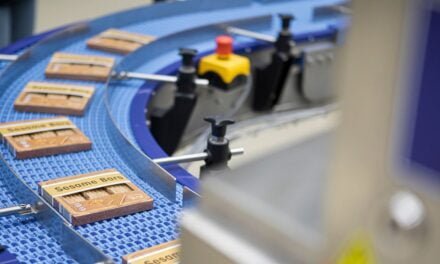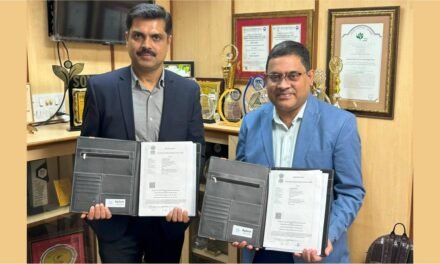Food fraud is a growing concern food industry. Food fraud can occur in the raw material, in an ingredient, in the final product, or in the food packaging. Food fraud scandals coming to light from around the world have highlighted the need to strengthen food fraud prevention measures across the entire supply chain, suggests Sohrab.
Table of Contents
Food fraud is a growing concern food industry. Recent food fraud incidents have increased the need to protect consumers by strengthening the food industry’s ability to detect and combat fraud across supply chains. Throughout the world, food manufacturing, distribution and retailing are becoming a highly complex business. Raw materials are sourced on a global scale, an ever-increasing number of food processing technologies are used and a wide variety of products are available to the consumer from around the world. For such complexity, it becomes necessary to develop comprehensive control systems to ensure the production of safe and high-quality food products.
Moreover, the new environment created globally under World Trade Organization (WTO) regime for food trade, places considerable obligations on both importing and exporting countries to strengthen their food control systems and to implement and enforce risk-based food safety strategies.
Food fraud includes altering, misrepresenting, mislabeling, substituting or tampering with any food product at any point along the farm-to-table food-chain. Fraud can occur in the raw material, in an ingredient, in the final product or in the food packaging. Food fraud is when food is put into the marketplace with the deliberate intention of misleading the consumer for economic gains. There are many ramifications including recycling animal by-products back into the food chain, selling foods that are past their “best before” date, deliberate mislabeling, substituting ingredients with cheaper alternatives and making false claims about their origin

Food fraud scandals coming to light from around the world have highlighted the need to strengthen food fraud prevention measures across the entire supply chain. Not only is this necessary to protect the health of consumers, but food industry and regulators both know that trust is the foundation upon which their efficient functioning rests. The impact on any particular industry can range from minor economic damage to the potential loss of economic viability of the food industry. A firestorm of cases involving food-fraud, stoked by greed and economical gains is growing by the year both domestically and worldwide.
There is a new and emerging concept of food safety (See box 01) encompassing new components to develop a sound food protection system to build confidence in international food trade.
Differing Understanding of Food Fraud
There is no harmonized internationally accepted definition of food fraud but there are different definitions brought out by different organizations:
- Deception utilizing material goods for economic gain or avoiding a loss. Wrongful or criminal deception utilizing material goods for financial or personal gain (ISO 22380).
Note 1 Fraud means wrongful or criminal deception intended to result in financial or personal gain creating social or economic harm. - A Food Fraud is a “deliberate substitution, addition, tampering or misrepresentation of food, food ingredients or food packaging, or false or misleading statements made about a product for economic gain (U.S. Pharmacopeia).
- Food Fraud is a collective term used to encompass the deliberate and intentional substitution, dilution, tampering, or misrepresentation of food, food ingredients, or food packaging; or false or misleading statements made about a product, for economic gain (Michigan State University).
- Food fraud has been defined as being “a dishonest act or omission, relating to the sale or preparation of food, which is intended for personal gain or to cause loss to another party (UK Food Standards Agency).
- Food Fraud is the deception of consumers using food products, ingredients, and packaging for economic gain and includes substitution, unapproved enhancements, misbranding, counterfeiting, stolen goods or others. (Global Food Safety Initiative-GFSI).
Incidences of Food Fraud Through the Times
Food fraud and adulteration were first addressed in the USA by food laws-as far back as 1784. Food and Drug Administration (FDA) USA in the 19th century, began protecting consumers from snake oil salesmen and other charlatans that preyed on the susceptible public with their alchemy-spiked tonic and elixirs. To help counter this the FDA has several hundred agents deployed worldwide as part of its chemical investigations division to investigate food fraud.
In 2013, Europeans were outraged to discover that horsemeat was a key ingredient in burgers and ready meals sold in supermarkets under the guise of other more expensive meats such as beef. A major British supermarket chain selling the offending items suffered a EUR 300 million drop in market value as a result.
The food safety incident in China in 2008, involving milk and infant formula adulterated with melamine created a scare worldwide. China reported an estimated 300,000 victims with six infants dying from kidney stones and other kidney damages, and an estimated 54,000 babies were hospitalized. The melamine added to milk to increase protein content, raised concerns about food safety in China, and damaged the reputation of China’s food exports, with at least 11 countries stopping all imports of Chinese dairy products. The World Health Organization referred to the incident as one of the largest food safety events it has had to deal with in recent years, and that the crisis of confidence among Chinese consumers would be hard to overcome.
India 1998 in New Delhi, adulteration of edible mustard oil with Argemone mexicana seed oil caused epidemic dropsy in thousands of people. Epidemic dropsy is a clinical state resulting from the consumption of edible oils adulterated with Argemone mexicana seed oil that contains the toxic alkaloids saguinarine and dehydrosanguinarine. The epidemic in New Delhi is the largest so far, in which over 60 persons lost their lives and more than 3000 victims were hospitalized.
Products Most Affected by Food Fraud
The most common foods involved in fraud, in order of prevalence are:
- Fish and seafood – The most common type of products being adulterated are seafood products. According to a study by Oceana, the highest mislabeling rates are for fish sold as snapper (87%) or tuna (59%) identified by DNA analysis were other than what was found on the label. Only about 8 percent samples of red snapper purchased nationwide were actually red snapper.
- Dairy Products – Cow milk can have milk from other types of animals such as sheep, buffalo, and goats-antelopes, added to it. It can be adulterated with reconstituted milk powder, urea, and rennet, among other products (oil, detergent, caustic soda, sugar, salt, and skim milk powder). Adulterated milk may also be watered down and then supplemented with melamine to artificially raise the apparent protein content and hide dilution.
- Oils and Fats – Almost 70 percent of extra virgin olive oil is said to be adulterated, the oil is often substituted or mixed with lower-cost alternatives oils such as soybean, corn, peanut, sunflower, etc.
- Meat Products – Meat product fraud comprise of the majority of EU fraud. It includes the replacement of high values species with lower value species and dilution of product with water. In 2013, consumers in England, France, Greece and several other countries were defrauded and unknowingly purchased meatballs, burgers and other food products that contained horse meat.
- Honey – Honey is added with sugar syrup, corn syrup, fructose, glucose, high-fructose corn syrup, and beet sugar, without being disclosed on the label. Honey from a “non-authentic geographic origin” is also common, for example where honey from China is transshipped through another Asian country and falsely sold as honey from the second country-usually to avoid higher customs duties and tariffs that would be imposed on honey from China.
- Fruit juices – Fruit Juice might be watered down, or a more expensive juice (such as from pomegranates) might be diluted with a cheaper juice (such as apple or grape juice).
- Coffee and tea – Ground coffee may contain roasted corn, ground roasted barley, and roasted ground parchment
Food Fraud Elements
Food fraud manifests in many ways and elements of food fraud are shown in Fig.01.

SUBSTITUTION – It involves the complete replacement of a food product or an ingredient with an alternate product or ingredient. This is where a high value or scarce food commodity is replaced with a cheaper substance of a similar kind without altering its overall characteristics.
Examples
i) Sunflower oil partially substituted with mineral oil,
ii) Extra virgin oil substituted with oil of a lower cost such as regular olive oil or diluted with soybean oil,
iii) Substituting higher value fish with lower cost, more abundant fish,
iv) Palm oil with ghee,
DILUTION – Dilution is where a component is ‘watered-down’ with another liquid. It involves partial replacement of a food product or ingredient with an alternate ingredient.
Examples
i) Dilution of honey with sugar syrups,
ii) olive oil with other oil,
iii) Horse meat to ground beef.
iv) Water in milk.
That’s because olive oil is often diluted with peanut oil; if a consumer has a peanut allergy, it becomes a very serious-even life-threatening situation.
COUNTERFEIT – It is fraudulent labeling of a product by an unauthorized party as a brand-name product. According to WTO counterfeit is “unauthorized representation of a registered trademark carried on goods identical or similar to goods for which the trademark is registered, with a view to deceiving the purchaser into believing that he/she is buying the original goods. ISO defines a counterfeit as a “material good imitating or copying an authentic material good”. Definitions vary, but there is a distinction between trademark misuse and pure product fraud, even if counterfeiting is often understood to cover both cases. At best, buying counterfeit goods is a waste of money. At worst, they can pose a significant risk to health and safety. In addition, measures to prevent or combat counterfeit cost regulators and industry time and money, which consumers ultimately pay for.
Examples
Manuka honey, an expensive variety of honey produced only in New Zealand. Manuka honey manufacturers in New Zealand estimate that 1700 tons are produced each year, yet up to 10000 tons are sold around the world, meaning the cheaper kinds are falsely labelled.
UNAUTHORIZED ENHANCEMENT – Artificial enhancement is the addition of unapproved chemical additives to enhance the perceived quality of a product.
Examples
i) Melamine added to enhance protein value in milk,
ii) Use of unauthorized additives (Sudan dyes in spices)-Sudan dyes to chili powder
MISLEBELING – It refers to misrepresentation with respect to harvesting or processing information. Examples include misrepresentation of label information for organic produce, cage-free eggs, kosher foods, halal foods, and date-markings. Almost half of the seafood samples tested by TRU-ID using DNA barcoding by Oceana Canada Ottawa were found to be mislabeled. One third were species substitution as what was shown on the label were different in content -Tilapia labelled as Red Sniper
CONCEALMENT – It is harmful food colouring applied to fresh fruit to cover defects. This also includes a misrepresentation of the geographic origin of a product to avoid import duties, regulatory oversight, or to benefit from consumer demand.
Examples include routing Chinese honey shipments through Vietnam to avoid U.S. import duties and mislabeling imported shrimp as U.S. Gulf coast shrimp.
Food Fraud Mitigation Measures
Approach to Food fraud prevention process

Similar to other management systems such as ISO 22000/HACCP, a food fraud management system is a continuous process (See Fig 2). It begins with an understanding and characterization of food fraud vulnerabilities, followed by planning for mitigation strategy and its implementation. Then measuring the results of process performance and effectiveness and finally act on the results of objective measurements. Periodically, as changes occur that may impact the previously identified vulnerabilities such as a newly identified food fraud element for an ingredient is reported, changes in the supply chain for an ingredient. The entire process must be carried out again to ensure its continued suitability and effectiveness.
Methodology to mitigate food fraud
Conduct vulnerability assessment: Vulnerability assessment is core for implementation of food fraud mitigation measures. This is the step of identification of vulnerabilities and determining actionable processing steps. It includes the identification of the severity and scale of the potential impact on public health. Reviewing and assessing various factors, which create vulnerabilities in a supply chain identifying weak points where fraud has greater chances to occur. The vulnerability assessment is not a onetime activity but a dynamic continuous process.
The food industry should conduct vulnerability assessment of the inputs they use in the processing operations and establish their suitability and guard against food frauds getting in. This mainly include:
- Raw material specifications-Adequacy of raw material specifications is an important preventive aspect against food fraud. Specifications established for raw materials guide purchase and provide appropriate authenticity criteria to mitigate the inherent vulnerabilities. For example, UV absorbance is specified to detect the potential adulteration of extra virgin olive oil with refined oils. Specification criteria linked to food fraud prevention must be thoroughly defined, in line with the level of complexity and variability of the ingredient’s composition. When a specific parameter needs to be measured to control the raw material authenticity, particular attention must be given to using analytical methods that are fit-for-purpose.
- Supplier relationship- There should be systems in place to approve the suppliers’ production sites, with requirements for approval based on risk such as raw material risk, location of food safety control measure and supplier performance. Once suppliers have been qualified according to a robust approval process, the relationship between food industry and supplier is critical to support any adulteration prevention effort. The closer the relationship, the more knowledge and confidence will be shared between each party. Confidence is increased with a supplier’s readiness to share information on their supply chain and processes. This is why the development of trusted suppliers rather than continuous rotation of suppliers is important in mitigating the risk of food fraud. The closer the relationship, the lower the risk.
- Supply chain transparency and simplification-A streamlined upstream supply chain improves transparency, traceability, and the management of material safety and quality standards. It also gives fewer opportunities for fraudsters to penetrate the supply chain. It is important to make supply chain transparency fully visible by mapping and simplifying supply chain to eliminate sources of risk.
- Establishing a continuum of responsibilities through the food chain-Although the primary responsibility lies with the food facility for ensuring that the foods manufactured are safe and suitable, there is a continuum of effective efforts and controls needed by other stakeholders in the food chain, including primary producers, to assure the safety and suitability of food products.
Implementation of food safety management system
The implementation of food safety management systems such as ISO 22000/HACCP provides main preventive measure to demonstrate the authenticity of their products. Conformity to the standard requires an organization to demonstrate its ability to control food safety hazards to ensure that food is safe at the time of human consumption as well as demonstrate compliance with applicable statutory and regulatory food safety requirements. The Global Food Safety Initiative (GFSI) has added in its certification process specific requirement to control food frauds for food safety.
Effective laboratory testing system
Effective analytical methods for food fraud detection are few and still in the developmental stage. The majority of the methods in common use today for EMA detection are time-consuming, costly and inappropriate for use on the production line or out of the laboratory. The analytical techniques to combat food fraud should be fast, accurate and convenient using portable or handheld devices. Spectrophotometric and spectroscopic methods combined with chemometric analysis, and perhaps in combination with other rapid physico-chemical techniques, could be the answer.
Validation of mitigation measures
The mitigation measures planned to be used need validation through the provision of objective evidence that the requirements for a specific intended use or application have been fulfilled. It is important to validate mitigation measures that they are working, and continually review food fraud management system. Mitigation strategies should be to decrease vulnerability to a certain type of contamination in the supply chain. The mitigation measures are implemented at each actionable processing step to provide assurances that vulnerabilities will be minimized or prevented. Steps must be taken to establish and ensure proper implementation of each mitigation measure for monitoring the mitigation strategies. Verification activities to ensure that monitoring is conducted and appropriate decisions about corrective actions are made. Facilities must ensure that personnel assigned to the vulnerable areas receive appropriate training and the facilities must maintain records for food fraud monitoring, corrective actions, and verification activities.
Design mitigation strategy and implement mitigation measures
A product fraud countermeasures and control strategy as a continual process starts from an analysis of situational context of product fraud, through several classifications of product fraud and fraudsters, and move towards implementation of bespoke countermeasures and effectiveness assessment of the countermeasure (See Fig 3).

These seven steps (Fig 3) in designing product fraud countermeasures and control strategy are necessary. They should be meticulously studied to understand product profile to institute a plan for control of food frauds for individual products processed.
Development of Vulnerability Control plan
Food industry should put in place appropriate control measures to reduce or eliminate the identified vulnerabilities.
- Monitoring strategy for food fraud control: The Food facility should develop appropriate policies and procedures for food fraud prevention. When there is a reasonable possibility that adulteration could result in a public health hazard, mitigation strategies for processes of food facilities should be instituted. Consideration of risk of fraud for a food ingredient requires the understanding of the inherent raw material vulnerabilities, the business vulnerabilities, and establishing the appropriate controls. The food fraud prevention plan may be supported by the implementation of the Food Safety Management System in accordance with ISO 22000/HACCP systems for all its products. The plan shall comply with applicable legislation. The Food industry should have a documented Food fraud vulnerability control plan in place that should specify the control measures that have been implemented to minimize the public health risks from the identified food fraud vulnerabilities through the food chain.
- Specification management: The food facility should develop a robust procurement plan based on the defined specifications for every ingredient and product required for the operation of the food businesses. The specification must give special emphasis on the venerability of processes and products. Certain ingredients are by nature more vulnerable to adulteration for instance apple juices or apple purees are more vulnerable than apple pieces. Fraud history of cases of adulteration of specific raw materials is a good source of information. It is an indicator of the raw material potential vulnerability and an important source of possible adulterants for which detection and deterrence are needed. The food industry shall require that the supplier ensure that for all items and services (including utilities, transport and maintenance) purchased and having effect on product safety should be based on documented specifications. The establishment shall require that a specification review process is in place.
- Supplier assessment and monitoring: The food industry should have a comprehensive periodic assessment of the processes and products. It should develop plans carefully for periodic audits based on appropriate documentation for the auditor to assess and to have appropriately trained auditors. It should be planned in such a way that it takes place prior to the certification audit if facilities are certified. These audits should address all processes, products and systems in place with special emphasis on identified venerability areas including findings of the previous audit, resolution of complaints, the effectiveness of the management system, progress on continual improvement, operational control, review of changes and use of marks and references to certification.
- Competent Analytical testing facilities: Testing and assessment are the backbone for the prevention of food frauds. It must be built in the processes through the food chain and identify areas of stress to venerability’s identified. There a number of sophisticated testing methods available such as DNA, 2D barcode or Radio Frequency Identification (RFID). The facility should choose the most appropriate and accurate testing method commensurate with cost and time involves. It is necessary to have quick methods so the results become available to take a decision.
- Application of Anti-counterfeit technologies: Track and Trace systems protects the supply chain against infiltration and abuse with additional benefits of safety and improvements in supply logistics and efficiency. There is good reason to believe that a common database structure whether 2D barcode or RFID will support counterfeiting problems. Food facility should be encouraged to implement Track and Trace technology and a barcode-based system should be developed as a priority, allowing natural progression to RFID. The other counterfeit technologies include RFID chips, tags and labels, holograms, smart technology, tamper-evident closures, special inks, nanomaterials, readers, printers, recognition equipment, software solutions and other forms of relevant auto-ID technology for manufacturers and governments to help them protect brands and revenue.
References
- ISO 22380 Security resilience-authenticity, integrity, and trust for products and documents- general principles for product fraud risk and countermeasures.
- ISO 22000, Food safety management systems- Requirements for any organization in the food chain.

















